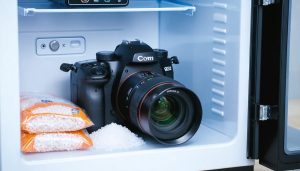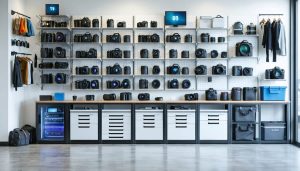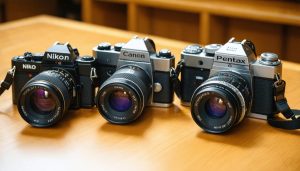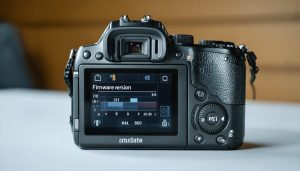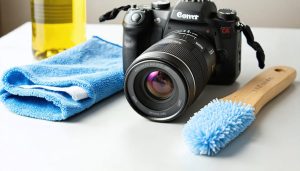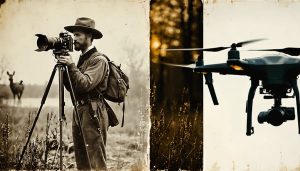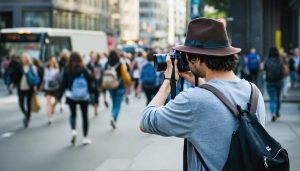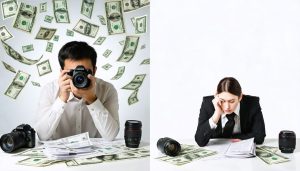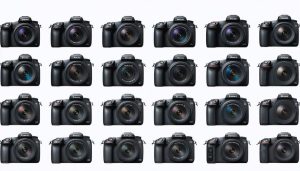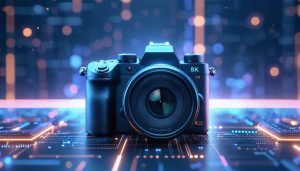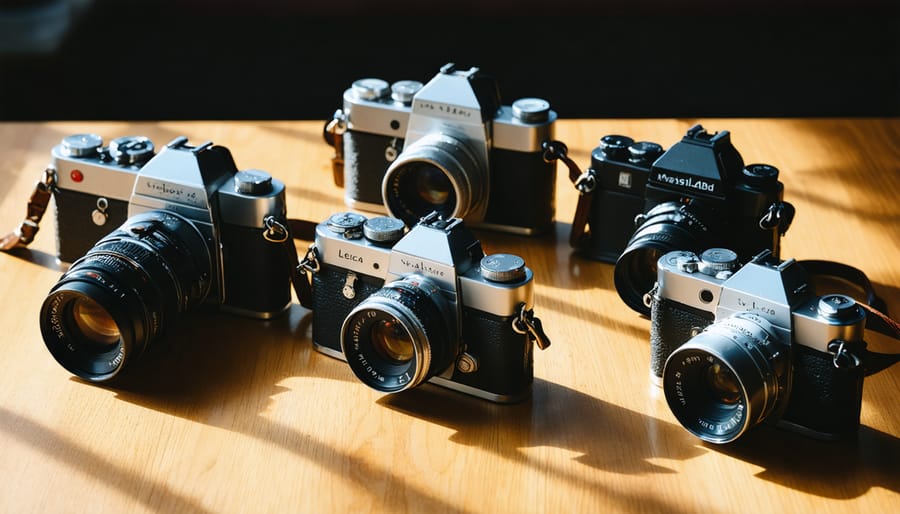
That dusty Leica M3 in your grandfather’s attic could be worth thousands – vintage cameras have become increasingly valuable collectors’ items, with some rare models fetching upwards of $50,000 at auction. From the precision-engineered Rolleiflex to the iconic Hasselblad used in NASA space missions, certain vintage cameras command premium prices in today’s market. The challenge lies in identifying which models are truly valuable versus those that merely look old.
In this comprehensive guide, we’ll explore the most sought-after vintage camera brands, reveal the key factors that determine their worth, and provide expert tips for authenticating and valuing your classic equipment. Whether you’re an experienced collector or recently inherited an old camera, understanding what makes certain models valuable can help you make informed decisions about buying, selling, or preserving these pieces of photographic history.
Learn which mechanical features, manufacturing dates, and condition indicators separate the $50 garage sale finds from the $5,000 collector’s pieces. We’ll also address common misconceptions about vintage camera values and show you how to spot the telltale signs of truly valuable specimens.
Most Valuable Vintage Camera Brands
Leica: The Crown Jewel of Collectors
When it comes to vintage cameras, Leica stands as the undisputed king of collectibles, with certain models fetching astronomical prices that can make even seasoned collectors catch their breath. While you might display your vintage camera collection with pride, Leica pieces often become the centerpiece of any showcase.
The Leica M3, produced from 1954 to 1966, remains one of the most sought-after models, with pristine examples commanding $2,000-$4,000. However, it’s the rare variants that truly shine in the market. The Leica 0-Series, produced in 1923 with only 23 units made, has seen examples sell for over $2.95 million at auction.
Black paint Leicas typically command higher prices than their chrome counterparts, with the M2 and M3 black paint versions often selling for double their chrome siblings. The Leica MP, produced in limited quantities during the 1950s, can fetch anywhere from $25,000 to $40,000 depending on condition and provenance.
For collectors starting their Leica journey, the M2 and M4 models offer excellent entry points, typically ranging from $1,500 to $3,000. When evaluating any Leica, pay special attention to the lens condition, rangefinder accuracy, and original documentation – these factors can significantly impact value.
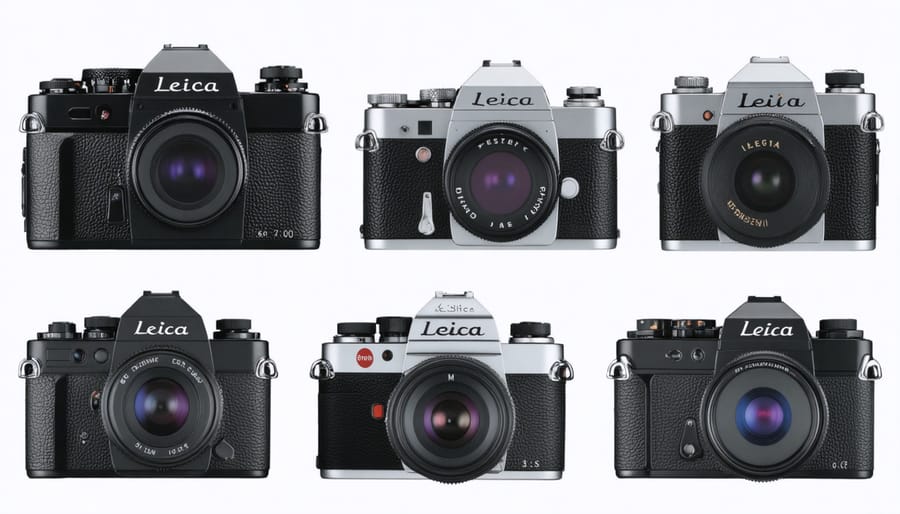
Hasselblad’s Space Legacy
When it comes to valuable vintage cameras, Hasselblad’s space legacy puts them in a league of their own. The Swedish manufacturer’s connection to NASA’s space program, particularly during the Apollo missions, has created an unmatched collector’s appeal for certain models.
The Hasselblad 500C, modified for space missions, became the first camera on the moon during Apollo 11. While actual space-flown Hasselblads are practically priceless (and mostly housed in museums), standard models from this era command impressive prices. A well-preserved Hasselblad 500C from the 1960s can fetch between $1,500 and $4,000, while special editions can surpass $10,000.
The 500EL, an electric variant used extensively in later Apollo missions, is particularly sought after. Even non-space versions of this model regularly sell for $3,000 to $6,000 when in excellent condition. The Hasselblad SWC, famous for its superwide lens and compact design, is another highly collectible model, with prices ranging from $4,000 to $8,000.
What makes these cameras especially valuable isn’t just their space connection – it’s their exceptional build quality and modular design. Many still function perfectly today, testament to Hasselblad’s legendary engineering. For collectors, documented provenance and original packaging can significantly increase a camera’s value, sometimes doubling the asking price.
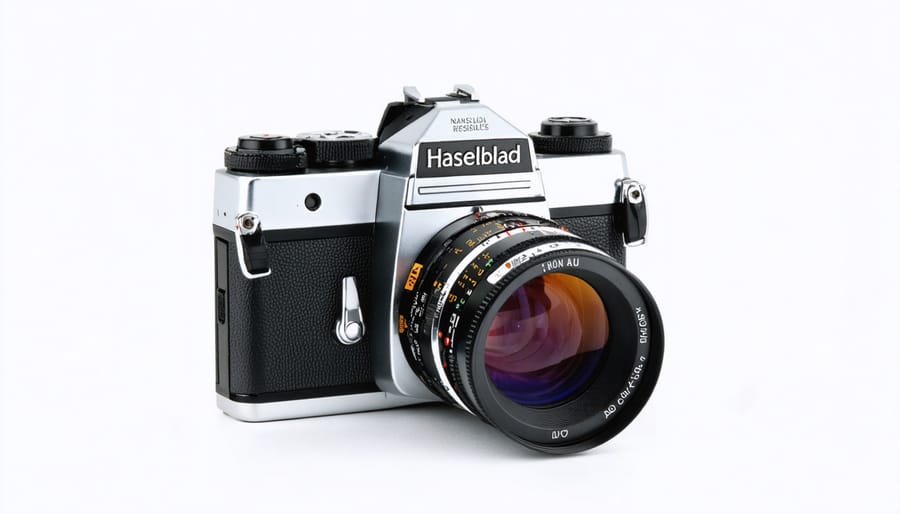
Rare Nikon and Canon Models
Among vintage cameras, certain Nikon and Canon models stand out as particularly valuable collector’s items. The Nikon SP rangefinder from the late 1950s, especially the rare black paint versions, can fetch upwards of $5,000 in good condition. The Nikon S2 and S3 rangefinders also command premium prices, with the Olympic edition S3 being especially sought after.
For Canon enthusiasts, the Canon VT Deluxe from 1956 is a prized possession, with pristine examples selling for $3,000-4,000. The Canon P rangefinder, particularly early production models, has seen significant value appreciation in recent years. However, the holy grail for Canon collectors is the Canon Model IV Sb from 1952, with only a handful known to exist today.
Limited edition professional models from both manufacturers also hold substantial value. The Nikon F2 Titan from 1978, featuring a titanium body, is highly coveted, while the Canon F-1 High Speed Motor Drive model remains one of the most valuable Canon SLRs.
Watch for cameras with unique features or historical significance. The Nikon S3M half-frame camera and the Canon 7 with its unique trigger wind mechanism are examples of models whose rarity drives their value. Condition is crucial – original boxes, manuals, and accessories can double or triple a camera’s worth.
Professional tip: Always verify serial numbers and production dates when investing in these models, as counterfeits do exist in the high-end vintage camera market.
What Makes a Vintage Camera Valuable?
Rarity and Historical Significance
In the world of vintage cameras, rarity often directly correlates with value, but the story behind the numbers can be even more compelling. Limited production runs, such as those of the Leica M3 DS (Double Stroke) from the mid-1950s, can command premium prices due to their scarcity. Similarly, cameras that survived historical events or were used during significant moments tend to fetch higher prices among collectors.
Manufacturing challenges during World War II, for instance, led to several unique variants of popular cameras. The Nikon S-series rangefinders produced during the Korean War are particularly valuable due to their connection to photojournalism history. Some Zeiss Ikon models from pre-war Germany are highly sought after because many were destroyed during factory bombings, making surviving examples exceptionally rare.
Production accidents or manufacturing defects can also increase value. The famous Leica 0-Series, with only about 25 units ever produced in 1923, represents the holy grail for collectors, with one example selling for €14.4 million in 2022. Even less dramatic production quirks, like the Canon P rangefinder with specific serial number ranges, can significantly boost value.
The historical significance extends beyond mere numbers. Cameras used by famous photographers or documented in significant events carry premium values. For example, vintage Rolleiflex cameras used in fashion photography during the 1950s golden era are particularly desirable to collectors.
Condition and Functionality
When it comes to vintage cameras, condition is absolutely paramount in determining value. A well-preserved camera in working condition can command prices several times higher than the same model in poor condition. Collectors particularly value cameras that maintain their original finish, have minimal wear, and include their original packaging and accessories.
The functionality of mechanical components plays a crucial role. Cameras with smooth-operating shutters, accurate light meters, and pristine viewfinders typically fetch premium prices. However, it’s worth noting that even non-working cameras from prestigious manufacturers can still hold significant value as collectibles or for parts.
Learning how to properly maintain vintage cameras can significantly impact their long-term value. Pay special attention to signs of corrosion, fungus in lenses, and deteriorating light seals. Regular maintenance, including cleaning vintage lenses and lubricating mechanical parts, can help preserve both functionality and value.
Common condition issues that affect value include brassing (worn finish revealing brass underneath), dents, scratches, and sticky shutters. The presence of original leather cases, manuals, and accessories can increase a camera’s worth by 20-30%, even if they show some wear. For serious collectors, finding a complete set in excellent condition can be worth the premium price, often commanding thousands more than a camera body alone.
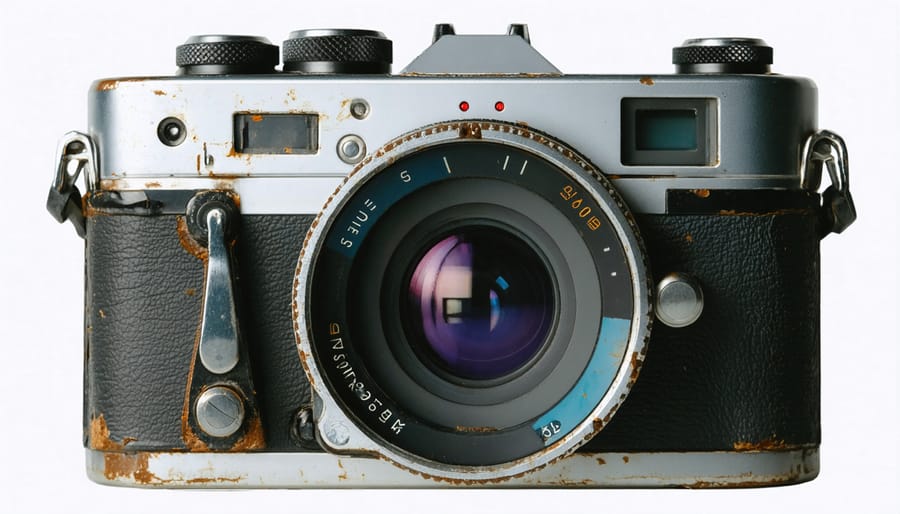
Original Packaging and Accessories
In the world of vintage cameras, original packaging and accessories can significantly boost a camera’s value – sometimes by as much as 50-100%. Original boxes, particularly those in good condition, are highly sought after by serious collectors who value completeness and authenticity. A Leica M3 with its original box, manual, and accessories might fetch twice the price of the camera body alone.
Manuals are especially valuable as they provide historical context and operating instructions. Even if the camera isn’t particularly rare, having the original manual can add $50-200 to its value. Period-correct camera cases, especially leather ones bearing the manufacturer’s logo, are also prized by collectors.
Original accessories like lens caps, hoods, and filters demonstrate that the camera was well-cared-for throughout its life. Factory-supplied accessories often command premium prices, particularly for prestigious brands like Hasselblad, Leica, and Rollei. For instance, original Hasselblad viewfinders or specialized backs can sell for hundreds of dollars independently.
Keep in mind that condition matters tremendously. Boxes with tears, water damage, or missing parts will add less value than those in pristine condition. When selling a vintage camera, always preserve and include any original documentation, packaging, or accessories – even seemingly minor items like warranty cards or purchase receipts can enhance the overall package’s appeal to collectors.
Hidden Gems: Lesser-Known Valuable Cameras
Rare Soviet Cameras
While Leica and Hasselblad often steal the spotlight in vintage camera collecting, Soviet-era cameras have emerged as surprising dark horses in the market. These mechanical marvels, originally created as more affordable alternatives to Western cameras, now command impressive prices among collectors.
The Kiev 88, a medium format camera inspired by the Hasselblad design, can fetch between $300-800 in good condition. However, it’s the rare FED and Zorki rangefinders that truly excite collectors. Early FED models, particularly those manufactured before 1934, can sell for $1,000-2,500 due to their historical significance and limited production numbers.
The LOMO LC-A, which sparked the lomography movement, has seen its value steadily rise. Original Soviet-made versions in working condition typically sell for $200-400, with rare variants commanding even higher prices. The Leningrad, an uncommonly found professional rangefinder camera, can fetch upwards of $1,500 when found in excellent condition with its original case and accessories.
Perhaps the most sought-after Soviet camera is the KMZ Horizon 202 panoramic camera. Its unique swing-lens design and limited production run make it highly desirable, with pristine examples selling for $700-1,200. Similarly, the Sport, one of the earliest Soviet cameras from the 1930s, can command prices exceeding $3,000 due to its historical importance and scarcity.
When collecting Soviet cameras, condition is paramount. Look for cameras with smooth mechanical operation, clear viewfinders, and minimal signs of brass showing through the chrome plating. Original boxes, manuals, and accessories can significantly increase value, sometimes doubling the camera’s worth.
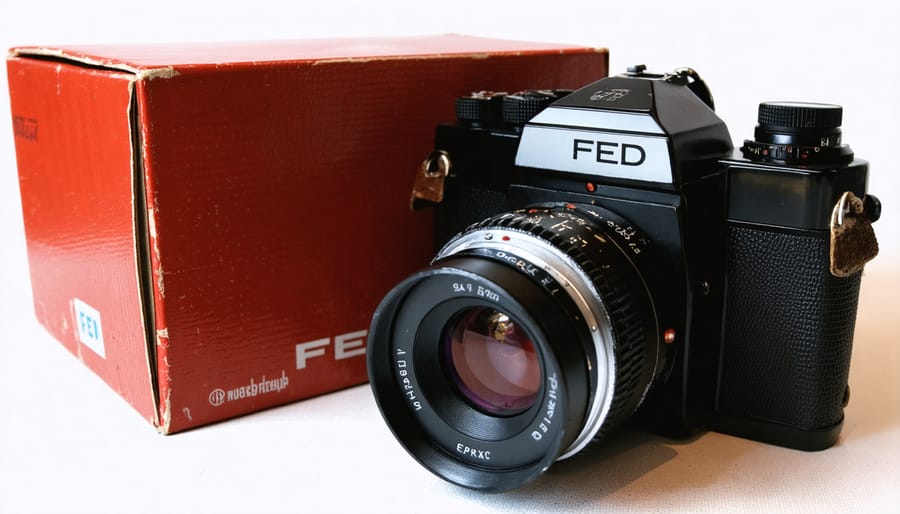
Japanese Prototype Models
Japanese prototype cameras represent some of the most valuable vintage photography equipment, with certain test models fetching astronomical prices among collectors. These rare specimens were typically pre-production units used to evaluate designs and features before mass manufacturing began.
The Nikon I prototype from 1947-1948 stands as one of the most sought-after Japanese cameras, with only a handful known to exist. These early test models featured distinct characteristics from the production versions, including different rangefinder configurations and unique serial numbers. When they occasionally surface at auctions, they can command prices exceeding $100,000.
Canon’s prototype cameras from the 1950s are equally prestigious. The Canon VT prototype, featuring experimental viewfinder designs, remains highly coveted. Similarly, early Pentax prototypes, particularly those from the development of the original Asahi Pentax SLR, represent significant historical value and regularly sell for premium prices.
Limited edition models also fall into this category. The Minolta V2 prototype, with its distinctive titanium finish and experimental exposure system, exemplifies the innovation of Japanese camera manufacturing. Only three are known to exist, making them exceptionally valuable.
When identifying Japanese prototypes, look for telltale signs such as hand-assembled components, non-standard serial numbers, or unusual feature combinations. Documentation is crucial – original factory paperwork or testing notes can significantly increase a prototype’s value. However, beware of counterfeit prototypes, as the high values these cameras command have attracted sophisticated forgeries. Always seek authentication from recognized experts before making significant investments in prototype models.
How to Verify and Sell Valuable Vintage Cameras
Authentication Process
Authenticating a vintage camera’s value requires careful attention to detail and a systematic approach. Start by thoroughly examining the camera’s serial number, typically found on the bottom plate or inside the film compartment. Cross-reference this number with manufacturer databases or reputable collector websites to verify the production year and model authenticity.
Next, assess the camera’s mechanical condition. All moving parts should operate smoothly, including the shutter mechanism, film advance, and aperture blades. Listen for any unusual sounds or resistance that might indicate internal damage. While some wear is expected in vintage equipment, preserving camera condition is crucial for maintaining value.
Document any original accessories, packaging, or manuals that accompany the camera, as these significantly impact worth. Photograph all angles of the camera, including close-ups of any damage or unique features. These details are essential for accurate valuation.
Consider consulting a professional appraiser specializing in vintage photography equipment. They can provide detailed analysis of rare models and identify valuable variations or limited editions. Many camera shops offer authentication services, though it’s worth getting multiple opinions for high-value pieces.
Finally, research recent sale prices on reputable auction sites and specialized photography forums. This gives you a realistic understanding of current market values and helps identify any potential red flags in authenticity claims.
Best Selling Platforms
When it comes to selling vintage cameras, choosing the right platform can significantly impact your success. eBay remains the most popular marketplace, offering a vast audience of photography enthusiasts and collectors worldwide. Its auction format can drive competitive bidding for rare or sought-after models, though you’ll need to factor in fees and shipping costs.
Specialized photography forums and marketplaces like KEH Camera and B&H Photo’s used department offer more targeted audiences and often provide fair market valuations. These platforms typically have verification processes, making them trusted sources for buyers and potentially leading to quicker sales at better prices.
Local options shouldn’t be overlooked. Camera shops specializing in vintage equipment often buy directly or offer consignment services. While you might not showcase your valuable cameras to as wide an audience, you’ll benefit from expert evaluation and immediate payment.
For high-end collectibles, auction houses like Christie’s or Bonhams can be excellent choices, particularly for rare Leicas or historically significant pieces. They provide authentication services and access to serious collectors, though they typically accept only the most valuable pieces.
Social media platforms like Facebook Marketplace and Instagram have also become viable options, especially for mid-range cameras. These platforms offer free listings and direct communication with buyers, though you’ll need to be vigilant about security and payment protection.
In the ever-evolving world of vintage cameras, understanding value requires patience, research, and attention to detail. As we’ve explored, certain brands like Leica, Hasselblad, and rare Nikon models consistently command high prices, but condition and rarity remain the ultimate determinants of worth.
Remember that authenticity is paramount when dealing with vintage cameras. Always verify serial numbers, examine build quality, and if possible, seek expert opinions before making significant purchases or sales. Documentation, original packaging, and accessories can significantly boost a camera’s value, so keep these items together whenever possible.
For those looking to sell, professional cleaning and basic maintenance can enhance your camera’s appeal, but avoid attempting complex repairs that might damage valuable pieces. Research current market prices through multiple sources, including auction sites, specialty retailers, and collector forums to ensure fair pricing.
Consider working with reputable dealers or auction houses for high-value items, as they can provide authentication services and access to serious collectors. For more modest pieces, online marketplaces can be effective, but always document your item thoroughly with detailed photos and accurate descriptions.
Whether you’re a collector or someone who’s discovered an old camera in the attic, remember that patience often leads to better returns. The vintage camera market continues to thrive, driven by both collectors and photographers who appreciate the unique qualities of classic equipment.

